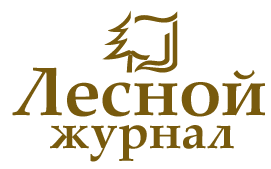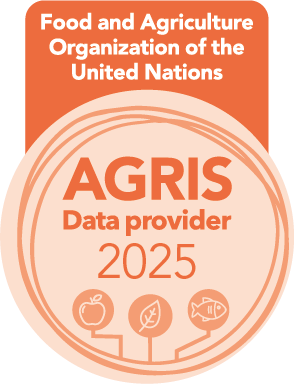

Address: Naberezhnaya Severnoy Dviny, 17, Arkhangelsk, 163002, Russian Federation, Northern (Arctic) Federal University named after M.V.Lomonosov, office 1425
Phone: +7 (8182) 21-61-18
E-mail: forest@narfu.ru
http://lesnoizhurnal.ru/en/
|
The Elemental Chemical Composition of Populus tremula in the Conditions of Technogenic Ecosystems of Kuzbass. С. 107-120
|
 |
Zagurskaya Yu.V., Siromlya Т.I.
UDС
581.192(574.24):582.623.2
DOI:
10.37482/0536-1036-2025-3-107-120
Abstract
Populus tremula L. (aspen) is one of the widespread species of woody plants, which has not yet been sufficiently studied in both ecological and biogeochemical terms. It is known that Cd can accumulate in elevated quantities in the above-ground parts of aspen. This is especially important in connection with the interest in the integrated use of wood resources. The aim of this work has been a comparative study of the content of chemical elements in various organs of P. tremula undergrowth under technogenic effects on the phytocenosis. Using the method of atomic emission spectrometric analysis (for As and Hg – atomic absorption spectroscopy), we have analyzed the content of 30 chemical elements in the aboveground organs of young P. tremula plants from technogenically disturbed habitats of Kuzbass (south of Western Siberia), including on overgrown rock dumps pf coal pits. No relationship has been found between the content of ash or individual chemical elements and the type of ecotope disturbance. The total number of chemical elements increases from the bark to the leaf blade, i.e. as you move towards more physiologically active organs. The lowest ash content is typical for bark, it is higher for stems, while no dependence of ash content on age has been found, and the concentrations of Al, Ca, Cr, Fe, Ga, Mn, Na, Si and Ti have been statistically significantly different in the “clean” and “dusty” stems. In addition to the above elements, “dusty” petioles have contained more Ba, Be, La, Pb, Sc and Zr, and the leaf blades have also contained V, Y and Yb. A direct strong correlation has been established between the ash content and the content of the listed chemical elements: 0.64–0.87 for stems and 0.75–0.93 for petioles and leaves. The Cd level in leaves, petioles and some bark samples of P. tremula exceeds the maximum permissible concentration for herbal medicinal raw materials. The absence of a correlation between the content of this element and the dustiness of the samples indicates that high Cd concentrations in the aboveground organs are due to the species characteristics of P.tremula, namely its high translocation potential.
Affiliation
1Federal Research Center of Coal and Coal Chemistry of the Siberian Branch of the Russian Academy of Sciences (Institute of Human Ecology), prosp. Leningradskij, 10, Kemerovo, 650065, Russian Federation; syjil@mail.ru*
2Institute of Soil Science and Agrochemistry of the Siberian Branch of the Russian Academy of Sciences, prosp. Akademika Lavrent’eva, 8/2, Novosibirsk, 630090, Russian Federation; siromlya@issa-siberia.ru
KeywordsSalicaceae, common aspen, anthropogenic impact, elemental chemical composition, organ-specificity, plant resources, heavy metals, biogenic elements, reclamation of coal pit dumps, the Kemerovo Region
For citation
Zagurskaya Yu.V., Siromlya Т.I. The Elemental Chemical Composition of Populus tremula in the Conditions of Technogenic Ecosystems of Kuzbass. Lesnoy Zhurnal = Russian Forestry Journal, 2025, no. 3, pp. 107–120. (In Russ.). https://doi.org/10.37482/0536-1036-2025-3-107-120
References
- Artamonova V.S., Bortnikova S.B. Biogeochemical Characteristics of the Root Layer of Herbaceous Plants in Recultivated Areas of Man-Made Waste. Vestnik Permskogo universiteta. Seriya Biologiya = Bulletin of Perm University. Biology, 2022, iss. 2, pp. 155–163. (In Russ.). https://doi.org/10.17072/1994-9952-2022-2-155-163
- Garipov N.R. Сomparative Analysis of Structure and Maintenance of Some Extractive Components of Wood and Bark of the Aspen (Рopulus tremula L.). Lesokhozyajstvennaya informatsiya = Forestry Information, 2016, no. 1, pp. 65–70. (In Russ.).
- State Pharmacopoeia of the Russian Federation. 14th ed. Vol. 4. Moscow, Ministry of Health of the Russian Federation, 2018. 1833 p. (In Russ.).
- Grodetskaya T.A., Baranov O.Yu., Rzhevskiy S.G., Fedulova T.P., Shabanova E.A., Konstantinov A.V., Mashkina O.S. Molecular-Genetic Analysis of Propagated in vitro clones of Populus alba L. and Populus tremula L. Using Microsatellite Markers. Lesotekhnicheskij zhurnal = Forestry Engineering Journal, 2021, vol. 11, no. 3 (43), pp. 16–30. (In Russ.). https://doi.org/10.34220/issn.2222-7962/2021.3/2
- Gryazkin A.V., Trung T.T., Van H.V., Prokof’yev A.N., Hoang M.A. Integrated Assessment of Raw Material Resources of Birch Forests. Lesnoy Zhurnal = Russian Forestry Journal, 2022, no. 1, pp. 23–35. (In Russ.). https://doi.org/10.37482/0536-1036-2022-1-23-35
- Danilov D.A., Yakovlev A.A., Suvorov S.A., Krylov I.A., Korchagov S.A., Khamitov R.S. Formation of Aboveground Phytomass of Deciduous Tree Species on Post-Agrogenic Lands. Lesnoy Zhurnal = Russian Forestry Journal, 2023, no. 1, pp. 65–76. (In Russ.). https://doi.org/10.37482/0536-1036-2023-1-65-76
- Deineko I.P., Faustova N.M. Element and Group Chemical Composition of Aspen Bark and Wood. Khimija Rastitel’nogo Syr’ja, 2015, no. 1, pp. 51–62. (In Russ.). https://doi.org/10.14258/jcprm.201501461
- Zheleznova O.S., Chernykh N.A., Tobratov S.A. Zinc and Cadmium in Tree Species of Forest Ecosystems: Patterns of Translocation, Accumulation and Barrier Mechanisms. Vestnik RUDN. Seriya: Ekologiya i bezopasnost’ zhiznedeyatel’nosti = RUDN Journal of Ecology and Life Safety, 2017, vol. 25, no. 2, pp. 253–270. (In Russ.). https://doi.org/10.22363/2313-2310-2017-25-2-253-270
- Zagurskaya Y.V., Siromlya T.I. Elemental Chemical Composition of Aspen Bark from Kuzbass Coal Mining Dumps. Prirodno-resursnyj potentsial i ekologicheskaya reabilitatsiya degradirovannykh landshavtov: Collection of Materials of the International Scientific and Practical Conference. Kadyrov Chechen State Univerisity, 2023, pp. 142–145. (In Russ.). https://doi.org/10.36684/86-1-2023-142-145
- Karomatov I.D., Rasulova H.N. Aspen – the Prospects of Use in Medicine (The Review of Literature). Biologiya i integrativnaya meditsina, 2017, no. 3, pp. 157–162. (In Russ.).
- Kopytov A.I., Masaev Yu.A., Masaev V.Yu. Impact of Blasting Technology on the Environment in Kuzbass. Ugol’ = Russian Coal Journal, 2020, no. 5, pp. 57–62. (In Russ.). https://doi.org/10.18796/0041-5790-2020-5-57-62
- Kopytov A.I., Shaklein S.V. Trends of Kuzbass Сoal Industry Improvement Strategy. Ugol’ = Russian Coal Journal, 2018, no. 5, рp. 80–86. (In Russ.). http://dx.doi.org/10.18796/0041-5790-2018-5-80-86
- Koropachinskij I.Yu., Vstovskaya T.N. Woody Plants of Asian Russia. Novosibirsk, Geo Publ., 2012. 707 p. (In Russ.).
- Kuznetsova S.A., Skvortsova G.P., Moroz A.A., Korolkova I.V., Schislenko S.A., Levdansky V.A., Kuznetsov B.N., Chesnokov N.V. Obtaining Veterinary Preparations from Aspen Bark and the Study of Their Therapeutic and Prophylactic Properties in Experimental Escherichiosis of Animals. Zhurnal Sibirskogo Federal’nogo universiteta. Khimiya = Journal of Siberian Federal University. Chemistry, 2018, vol. 11, no. 4, pp. 604–615. (In Russ.). http://doi.org/10.17516/1998-2836-0103
- Lednev S.A., Sharapova A.V., Semenkov I.N., Koroleva T.V. Plant Successions on Coal Mines’ Waste Piles in Forest-Steppe of the Tula Oblast. Izvestiya Rossiiskoi Akademii Nauk. Seriya Geograficheskaya, 2020, vol. 84, no. 2, pp. 239–245. (In Russ.). https://doi.org/10.31857/S2587556620020089
- Manakov J.A. The Characteristics of Revegetation on the Rock Dups at Different Stages of Regenerative Successions in Kuzbass. Uspehi sovremennogo estestvoznanija = Advances in Current Natural Science, 2012, no. 11, part 1, pp. 132–134. (In Russ.).
- Martynov A.M., Chuparina E.V. Examination of Phenol Compounds and Element Composition of Common Aspen Bark (Populus tremula L.). Sibirskij medicinskij zhurnal (Irkutsk) = Baikal Medical Journal, 2015, vol. 133, no 2, pp. 118–120. (In Russ.).
- Nikulina N.S., Vostrikova G.Yu., Dmitrenkov A.I., Filimonova O.N., Nikulin S.S. Protective Processing of Wood on the Basis of C9 Fraction Modified by Polymethyl Methacrylate Waste. Lesnoy Zhurnal = Russian Forestry Journal, 2014, no. 6 (342), pp. 138–143. (In Russ.).
- Romankevich E.A. Living Matter of the Earth (Biogeochemical Aspects of the Problem). Geokhimiya = Geochemistry International, 1988, no. 2, pp. 292–306. (In Russ.).
- Siromlya T.I. Plant Chemical Elements – Foliar Uptake. Biogeochemistry – the Scientific Basis for Sustainable Development and Protection of Human Health: Proceedings of the XI International Biogeochemical School. Tula, Tula State Pedagogical University, 2019, vol. 2, рр. 262–266. (In Russ.).
- Soboleva S.V., Voronin V.M., Esyakova O.A. The Content of Biologically Active Substances Water-Alcohol Extracts of Aspen Bark. Khimija Rastitel’nogo Syr’ja, 2020, no. 1, pp. 373–380. (In Russ.). http://doi.org/10.14258/jcprm.2020014442
- Urazbayev H.K. An Open Way of Extracting Coal. Aktualnye problemy sovremennosti = Actual Problems of Modern Times, 2021, no. 1 (31), pp. 182–186. (In Russ.).
- Tsarev A.P. The Diversity of Use of Poplar Wood. Lesnoy Zhurnal = Russian Forestry Journal, 2018, no. 5, pp. 48–64. (In Russ.). https://doi.org/10.17238/issn0536-1036.2018.5.48
- Tsarev A.P., Tsareva R.P., Tsarev V.A., Laur N.V. Breeding Tests of Juvenile Factorial Hybrids of Populus tremula L. Lesnoy Zhurnal = Russian Forestry Journal, 2022, no. 5, pp. 9–20. (In Russ.). https://doi.org/10.37482/0536-1036-2022-5-9-20
- Shevchenko O.S., Nekhoroshev S.V. Mineral Composition of the Leaves of the Common Aspen Growing on the Territory of the Khanty-Mansi Autonomous Okrug – Yugra. Khimiya. Ekologiya. Urbanistika: Proceedings of the All-Russian Scientific and Practical Conference (with International Participation). Perm, Perm National Research Polytechnic University, 2021, vol. 2, pp. 206–209. (In Russ.).
- Baldantoni D., Cicatelli A., Bellino A., Castiglione S. Different Behaviours in Phytoremediation Capacity of Two Heavy Metal Tolerant Poplar Clones in Relation to Iron and Other Trace Elements. Journal of Environmental Management, 2014, vol. 146, pp. 94–99. https://doi.org/10.1016/j.jenvman.2014.07.045
- Dunn C.E. Biogeochemistry in Mineral Exploration. Handbook of Exploration and Environmental Geochemistry, 2007, vol. 9, pp. 1–460. https://doi.org/10.1016/S1874-2734 (07)09001-8
- Guleria S., Singh H., Sharma V., Bhardwaj N., Arya S.K., Puri S., Khatri M. Polyhydroxyalkanoates Production from Domestic Waste Feedstock: a Sustainable Approach towards Bio-Economy. Journal of Cleaner Production, 2022, vol. 340, art. no. 130661. https://doi.org/10.1016/j.jclepro.2022.130661
- Hassinen V., Vallinkoski V.-M., Issakainen S., Tervahauta A., Kärenlampi S., Servomaa K. Correlation of Foliar MT2b Expression with Cd and Zn Concentrations in Hybrid Aspen (Populus tremula×tremuloides) Grown in Contaminated Soil. Environmental Pollution, 2009, vol. 157, iss. 3, pp. 922–930. https://doi.org/10.1016/j.envpol.2008.10.023
- Kivinen S., Koivisto E., Keski-Saari S., Poikolainen L., Tanhuanpää T., Kuzmin A., Viinikka A., Heikkinen R.K., Pykälä J., Virkkala R., Vihervaara P., Kumpula T. A Keystone Species, European Aspen (Populus tremula L.), in Boreal Forests: Ecological Role, Knowledge Needs and Mapping Using Remote Sensing. Forest Ecology and Management, 2020, vol. 462, art. no. 118008. https://doi.org/10.1016/j.foreco.2020.118008
- Kozlov M.V., Zverev V. Suitability of European Aspen (Populus tremula) for Rehabilitation of Severely Polluted Areas. Russian Journal of Ecology, 2022, vol. 53, no. 3, рр. 181–190. https://doi.org/10.1134/S1067413622030067
- Pesonen J., Kuokkanen T., Kaipiainen E., Koskela J., Jerkku I., Pappinen A., Villa A. Chemical and Physical Properties of Short Rotation Tree Species. European Journal of Wood and Wood Products, 2014, vol. 72, pp. 769–777. https://doi.org/10.1007/s00107-014-0841-5
- Platonov A.D., Snegireva S.N., Drapalyuk M.V., Novikov A.I., Kantyeva E.V., Novikova T.P. Wood Quality along the Trunk Height of Birch and Aspen Growing in the Restoring Forests of Central Russia. Forests, 2022, vol. 13, no. 11, art. no. 1758. https://doi.org/10.3390/f13111758
- Reimann C., Koller F., Frengstad B., Kashulina G., Niskavaara H., Englmaier P. Comparison of the Element Composition in Several Plant Species and Their Substrate from a 1 500 000-km2 area in Northern Europe. Science of the Total Environment, 2001, vol. 278, iss. 1–3, pp. 87–112. https://doi.org/10.1016/S0048-9697 (00)00890-1
- Rogers P.C., Pinno B.D., Šebesta J., Albrectsen B.R., Li G., Ivanova N., Kusbach A., Kuuluvainen T., Landhäusser S.M., Liu H., Myking T., Pulkkinen P., Wen Z., Kulakowski D. A Global View of Aspen: Conservation Science for WideSpread Keystone Systems. Global Ecology and Conservation, 2020, vol. 21, art. no. e00828. https://doi.org/10.1016/j.gecco.2019.e00828
- Thakur A.K., Kumar P., Parmar N., Shandil R.K., Aggarwal G., Gaur A., Srivastava D.K. Achievements and Prospects of Genetic Engineering in Poplar: a Review. New Forests, 2021, vol. 52, pp. 889–920. https://doi.org/10.1007/s11056-021-09836-3
- Tőzsér D., Horváth R., Simon E., Magura T. Heavy Metal Uptake by Plant Parts of Populus Species: a Meta-Analysis. Environmental Science and Pollution Research, 2023, vol. 30, pp. 69416–69430. https://doi.org/10.1007/s11356-023-27244-2
- Veselá H., Lhotáková Z., Albrechtová J., Frouz J. Seasonal Changes in Tree Foliage and Litterfall Composition at Reclaimed and Unreclaimed Post-Mining Sites. Ecological Engineering, 2021, vol. 173, art. no. 106424. https://doi.org/10.1016/j.ecoleng.2021.106424
- Zagurskaya Yu.V., Siromlya T.I., Kotsupiy O.V., Babaeva E.Yu., Ufimtsev V.I. Physiological and Biochemical Characteristics of Populus tremula Leaves in Anthropogenic Disturbed Habitats. BIO Web of Conferences: IV (VI)th All-Russia Scientific-Practical Conference “Prospects of Development and Challenges of Modern Botany”, 2018, vol. 11, art. no. 00050. https://doi.org/10.1051/bioconf/20181100050
|
Make a Submission


Lesnoy Zhurnal (Russian Forestry Journal) was awarded the "Seal of Recognition for Active Data Provider of the Year 2025"

|







